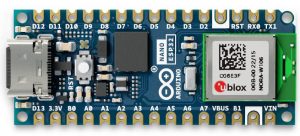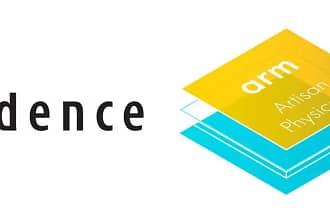“Beginners can explore in an easy-to-understand, welcoming environment, with a popular MCU supported by documentation and a global community of users,” said Arduino. “At the same time, more advanced users can take advantage of the Nano ESP32’s multi-language support and debugging capabilities – it features plug-and-play debugging with the Arduino IDE 2, which eliminates the need for any external hardware or third-party software.”
The ESP32 is incorporated as a NORA-W106-10B module from Ublox.
Processing is via a 240MHz 32bit dual-core Xtensa LX7 CPU and in total, the board has 8Mbyte of PSRAM, 16Mbyte flash, 512kbyte SRAM and 16kbyte SRAM in the low-power RTC (real-time clock). 8kbyte of the RTC ram is designated ‘slow’ and, according to Arduino, can be accessed by the ESP32’s ULP (ultra-low power) coprocessor, retaining data in deep-sleep.
The board has a built-in antenna and is 2.4GHz only and can output 10dBm. Support is for Wi-Fi 4 IEEE 802.11b/g/n, and Arduino claims up to 500m range. Bluetooth LE is v5.0 and up to 2Mbit/s – “it has the option to scan and advertise simultaneously, as well as supporting multiple connections in peripheral/central mode”, said Arduino.

Power can be applied as 3.3V via pins, 5V via its USB-C connector or 6 – 21V via pins.
Arduino has not included active power consumption on its data sheet but, according to the uBlox datasheet, module consumption is 286mA (Wi-Fi Tx 802.11n HT20 16.5dBm 100% duty-cycle) or 220mA (Bluetooth Low Energy, 0dBm, 100% duty cycle). Arduino does include the energy-sipping sleep mode figures: 240μA for light sleep and 7μA for deep sleep mode – although (not stated in the Arduino datasheet) these are module figures and not board figures.
Operation is over -40 to +85°C.
—
—






